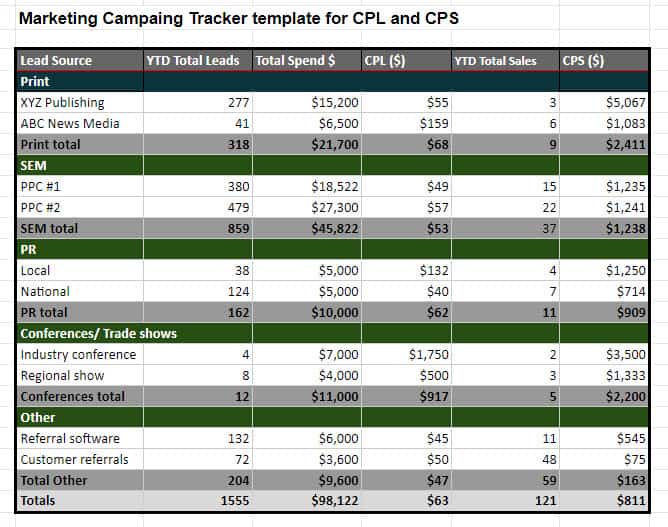Is Google My Business Worth It?
Google My Business (GMB) is an important tool that improves local search for businesses. It is an alternative to paid […]
Read More »Become a successful marketing consultant: Learn more

Sales and marketing are critical to any company.
Especially a manufacturing company.
While every department under the roof -- accounting, human resources, operations, research & development, etc -- plays a specific and important role, aligning the sales and marketing departments is the best way to successfully meet your customers’ needs and generate sales revenue for the company.
The sales and marketing departments in a manufacturing company work together to:
A recent LinkedIn survey on sales and marketing leaders found that 87% of the participants experienced business growth after aligning the sales and marketing departments. This is not a surprise.
To close more deals and make more sales, your manufacturing company must implement a collaborative strategy and integrate the sales and marketing departments who are literally tasked with the important job of gaining and keeping customers.
Your business is about to skyrocket, you will close more sales and you will make more money after you listen to this life-changing interview with one of the best sale professionals in the world.
Featuring Your Strategic Marketing Partner interviewing Ed Croson, B.A. in Psychology, who is one of the highest-performing sales professionals in the world. Ed has over 20 years experience working in intensely competitive industries including computer science, IT and online learning solutions, successfully closing over $100 million in business working with some of the largest companies on the planet.
Enjoy this audio teleconference here:
Understanding how each department contributes to your manufacturing company helps you determine which tasks to assign these two teams.
A sales and marketing department has many job tasks, but most are responsible for: 1. setting goals, 2. developing the pricing strategy, 3. customer relations, 4. collaborating with all departments, and 5. product and service innovation.
Let’s explore these topics now.
Your sales and marketing department is responsible for putting down S.M.A.R.T. goals. If you aren’t familiar with this goal setting acronym yet, SMART is short for: Specific, Measurable, Achievable, Realistic and within a Time Frame.
This planning process can occur weekly or monthly based on your business size and season. The sales and marketing teams will rely on previous Key Performance Indicators (KPIs) to determine the appropriate quotas and strategies to meet the goals.
The marketing department will specifically help determine the appropriate time and product quantities. This team will guide production departments on proper scheduling to meet demand and avoid waste.
The role of your sales and marketing department is to find out whether the company needs to alter product prices or perhaps abandon production altogether. The past sales will again prove helpful in decision making. Other factors will include customer feedback and market trends. The two departments must also deliberate on the best product placement activities to propel product sales.
Customer satisfaction is yet another responsibility for sales and marketing. User feedback is the best way to understand product performance, such as reviews or surveys.
Additionally, these teams must address any negative feedback promptly—plus have standard processes for dealing with product recalls. In such events, the marketing department must be swift in reassuring customers through public announcements, media campaigns, and other tactics.
The sales and marketing department must ensure their goals align with the company goals. Therefore, keeping clear lines of communication and maintaining transparency with other teams is crucial. For instance, your product development team must always know about product changes, whether source materials or quality demands.
The sales and marketing department’s responsibility is to also know the latest market trends, understand the company’s position in the industry, and propose solutions. Apple is an excellent example of the impact of innovation in increasing sales. Today and because of staying ahead of market trends and innovating superior products, iPhones have displaced Nokia, once a leading brand in the mobile phone industry.
If you are unsure whether to align the sales and marketing departments, several ways prove how these two teams can be in sync.
The key is to collaborate closely, focus on clearly identifying who the customer is, and work together to brainstorm new ways target these customers. Then, review the key performance indicators (KPIs) together. You are on the same team, have the same goals and the overarching theme is to: focus forward.
Marketing and sales work together in many ways, four initial and very important supporting strategies are:

Here's some more very important ways sales and marketing work together:
Lead generation has always been a significant pain point for sales and marketing teams. Low-quality or insufficient leads prevent sales teams from meeting their quotas. The two groups can map out a clear buyer cycle by working together. Doing so will not only improve the lead quality but also increase leads. The marketing department will focus on warming up the prospective buyer, making the task of lead conversion a more straightforward one for the sales team.
Another LinkedIn survey found that 70% of the participants delivered a more positive customer experience when they aligned their sales and marketing teams. Your sales department interacts with your customers every day. Therefore, they better understand the users’ demands and feedback. These insights can benefit the marketing team when making product modifications or introducing new ones.
Your marketing department constantly produces content to increase brand awareness and attract users. But, does this team know whether their marketing messages are performing well? When interacting with customers, your sales team often encounter questions like:
Communicating these customer concerns gives the marketing department a clear sense of which content to produce, such as blogs or F.A.Q.s, to improve the buyer journey.
Aligning the marketing and sales department is a wise business move your manufacturing company should already have made. Fortunately, it’s not too late. Several steps can help you bring them on the same page.
Start by eliminating silos in the customer journey, beginning from the brand awareness phase to the loyalty stage. Ensure both departments have an understanding of the target audience.
Consider having a document accessible to both teams to update as the customer needs change continually. These departments can also benefit from developing a joint strategy. Doing so will allow the teams to monitor the progress of their linked key performance indicators.
Finally, your sales and marketing department should ensure consistent messages to build customer trust and maintain a positive brand reputation.
There are endless benefits that come with aligning your sales and marketing department. Your competitors are already doing it. Address any barriers that exist within these teams and watch your business grow.